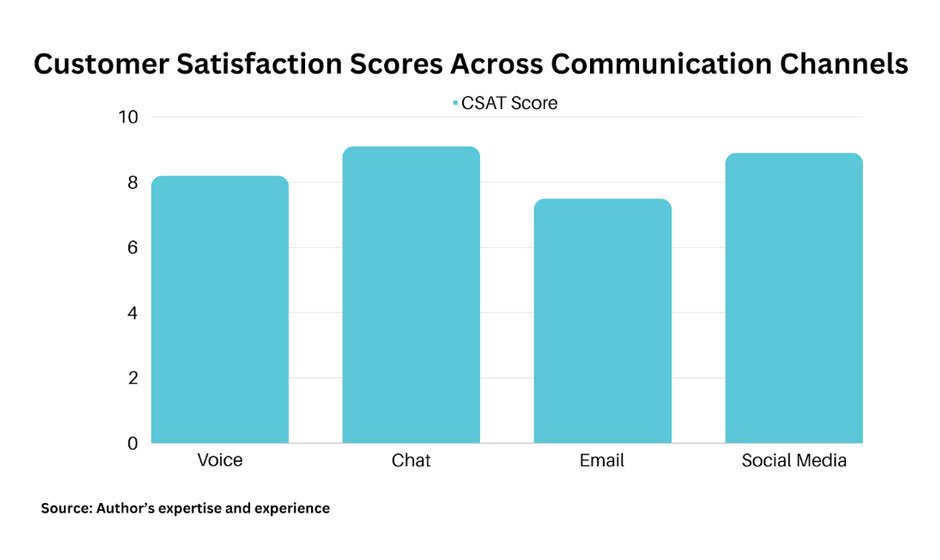Call centers play a crucial role in facilitating communication between companies and their customers addressing concerns such as products, services, bills, and inquiries. These centers rely on software to efficiently handle customer calls, organize information, and keep track of details. However, the call center industry is experiencing changes as technology continues to evolve.
In the coming years, we can expect artificial intelligence (AI) to become increasingly prevalent in call centers. AI encompasses computer programs capable of understanding speech, engaging in conversations, and learning autonomously over time. Moreover, the growth of cloud computing enables call center data and software to be stored and accessed from anywhere.
Furthermore, modern customers utilize a range of communication channels beyond phone calls when contacting companies. They reach out through chat apps, text messaging platforms, social media sites, and more. As a result call centers must adapt by engaging with clients across these channels.
This article delves into trends surrounding AI adoption in call centers as well as the advancements in cloud computing and social media customer service. Understanding these developments is crucial, for call centers striving to enhance their operations.
The Critical Role of Call Center Software
Effective customer communication management highly depends on call center software, which plays a critical role in handling interactions through channels such as phone, email, and chat. Given that these programs serve as the means of connecting customers with companies, their impact on satisfaction, loyalty, and overall experiences cannot be overstated.
The call center software market, valued at $23.81 billion in 2021, is expected to witness robust growth with an average annual expansion rate of approximately 20.3% according to industry experts’ estimations.
Transitioning to AI-Powered Customer Interactions
Artificial intelligence (AI) is rapidly transforming technology and reshaping customer service. This is being driven by the ability of AI chatbots and virtual agents to deliver 24/7 automated support, reduce wait times, and improve resolution rates.
Implementing the right AI tools can significantly enhance customer satisfaction. A survey by Salesforce found that 84% of customers feel AI has positively transformed their experience.
Other key stats on AI adoption highlighted in the report include:
- AI chatbots can resolve basic customer queries 70% faster than humans, decreasing average wait times by 30%.
- Intelligent virtual agents can independently handle over 50% of repetitive customer requests about account changes, payments or frequently asked questions. This allows human agents to focus on addressing more complex issues.
- An Accenture study analyzing over 1 million calls found that integrating AI increased first-contact resolution by 70%, dramatically improving the customer experience.
As AI capabilities continue to rapidly develop, virtual agents are becoming a vital aspect of call center solutions. Looking ahead, seamlessly integrating call center software integration with Oracle service cloud takes center stage, representing a dedicated embrace of cutting-edge technologies to enhance customer interactions. Additionally, speech recognition can comprehend queries without customers needing to go through tedious IVR menu options.
Over the next 5 years, AI-powered call centers are projected to improve customer satisfaction scores by over 40% through hyper-personalized service and correctly anticipating customer needs before they arise.
Transitioning to Cloud-Based Solutions
Another key shift occurring in the call center industry is the move from on-premise technology to cloud-based solutions. Shortly, Gartner predicts that cloud-native platforms will host over 95% of new digital workloads by 2025.
Migrating to the cloud provides call centers several advantages including:
- They offer 99.99% uptime with built-in failover capacity, compared to 97% for traditional on-premise installations. This ensures seamless continuity of operations.
- 70% lower total cost of ownership over 5 years by eliminating capital expenditure on servers and data centers.
- 62% improvement in average customer wait times, attributed to the flexibility and scalability of cloud platforms, especially during seasonal spikes.
With rigorous security protocols, cloud platforms also minimize data breaches. Findings from leading analysts indicate:
- Cloud solution providers reduced insider threat breaches by 65% through predictive user behavior analytics, access controls, and encryption.
- Advanced encryption applied to stored and transmitted data protects over 99% of sensitive customer call information.
As the reliability, efficiency, and security of cloud-based call center software continue to accelerate, adoption is projected to reach about 90% by 2027, according to the report.
Omnichannel Communication Strategies
Another prevailing trend is the use of omnichannel communication platforms to unify interactions across channels. This enables customers to move seamlessly from voice to chat to email, based on their preferences.
An omnichannel approach delivers substantial benefits including:
- 89% customer retention rates, 31% higher than single-channel communication.
- Up to 9% lower customer churn, increasing brand loyalty.
- 80% of customers expect consistent experiences across communication channels.
With over $1 trillion in global omnichannel retail revenues projected by 2025, call centers must evolve into an omnichannel model to align with consumer demand.

Advanced Analytics and Reporting Transition
Harnessing customer data through actionable insights is also integral to call center innovation. By leveraging analytics, call centers can track key performance indicators and optimize decisions.
According to research:
- 63% of call centers saw over 10% revenue growth by incorporating data analytics.
- Analytics-driven call centers resolved 22% more issues on first contact.
- Call centers using speech analytics reported 65% higher customer satisfaction scores.
As analytics and reporting capabilities progress, data-informed call centers will continue to outperform competitors.
Frequently Asked Questions
- How do you ensure data security when transitioning call centers to the cloud?
Cloud providers implement rigorous security measures, including encryption, access controls, and intrusion detection systems. Standards like SOC2 and ISO27001 certification also validate security practices.
2. What steps can improve the adoption of AI chatbots?
Gradual implementation, alongside human agents, allows chatbots to learn and improve from real experiences. Additionally, opting for customizable bot frameworks ensures alignment with call center needs.
3. How can data analytics improve customer issue resolution?
By detecting patterns in queries, analytics identifies common problems. Agents can then be trained and provided with relevant knowledge base articles to resolve these issues quickly.
Conclusion and Future Outlook
This article covered four defining trends steering call center evolution – the incorporation of AI, the rise of cloud-based software, the shift to omnichannel communication, and the transformational impact of analytics. As these advancements unfold, call centers will leverage these collective capabilities to deliver next-generation customer experiences.
Looking ahead, call centers will continue optimizing interactions through emerging innovations like natural language processing, predictive modeling, and expanded self-service options. However, despite the adoption of cutting-edge technologies, the fundamental priority of call center solutions remains unchanged: satisfying and retaining customers through supportive, efficient, and personalized engagement.

